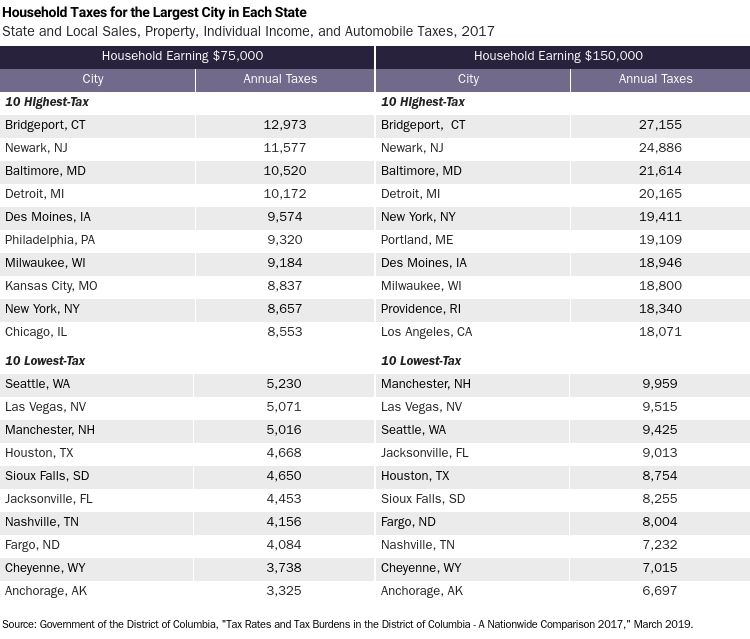Americans are moving from higher-tax states to lower-tax states.
As I discuss in this study, 578,269 people moved from the highest-tax states to the lower-tax states in 2016, on net. Of the 25 highest-tax states, 24 of them had net out-migration. Of the 25 lowest-tax states, 17 had net in-migration.
The pattern seems clear to me, but the degree to which moves are driven by taxes versus other factors is subject to debate. An annual Census Bureau survey asks Americans who move the reasons for their decision out of 19 choices, but the choices do not include taxes.
Many of the largest migration flows are between states with the highest and lowest taxes. State-local taxes are 14.7 percent of personal income in the largest outflow state, New York, but they are just 7.5 percent in the largest inflow state, Florida. Florida’s government costs half as much as New York’s, yet the services are probably just as good.
There are large tax differences between cities. The District of Columbia government produces an annual study comparing state-local taxes on hypothetical families at various income levels in the largest city in each state. The study includes sales, property, individual income, and automobile taxes.
The table shows results for 2017. Families earning $75,000 a year could save about $5,000 a year moving from a high-tax city to a low-tax city. Families earning $150,000 could save about $10,000 with such a move. Bridgeport and Newark have very high property taxes. Other high-tax cities, such as Detroit and Philadelphia, impose city income taxes on top of state income taxes.
People move because of weather, housing costs, and job opportunities. But these sorts of large tax differences are likely driving migration patterns as well.
